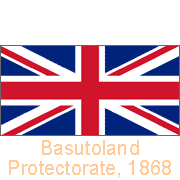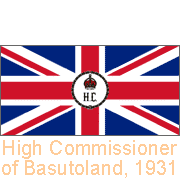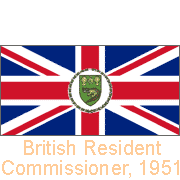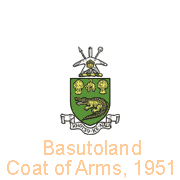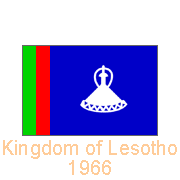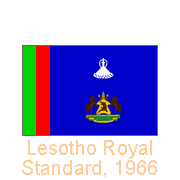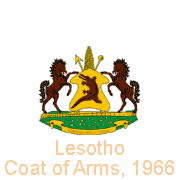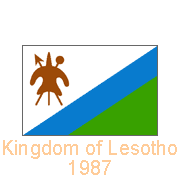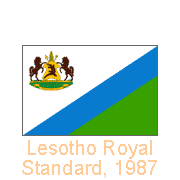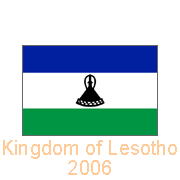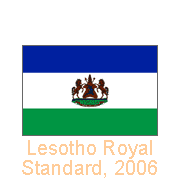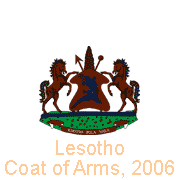Flag history of Lesotho
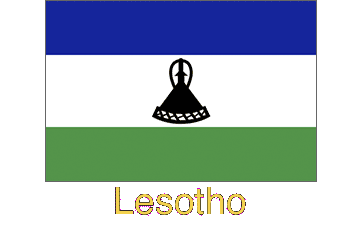
A Flag history of Lesotho
The British declared a protectorate over Basutoland in 1868 to prevent the mountain kingdom of the Basotho from being absorbed by South Africa. The Basotho (Southern Sotho) consequently flew the Union Jack as they did not have their own national flag. There were British High Commissioners with their distinctive flags.
you may then send it as a postcard if you wish.
In 1931, the post of High Commissioner of Basutoland, Bechuanaland and Swaziland, responsible for the administration of the British Protectorates in southern Africa, was created. The High Commissioner flew a British Union Flag charged in the centre, on a white roundel, with the letters H.C. in black, ensigned of the Imperial State Crown proper, within a garland of green laurel. Uniquely, the Resident Commissioner for Basutoland, which was a Crown Colony, had a personal flag. It was a British Union Flag with, in the centre, on a white roundel, the shield of the arms granted to the Colony of Basutoland by Royal Warrant on 20 March 1951: a green shield displaying a crocodile (Koena - the totem of Moshoeshoe’s clan) and a sheep flanked by two bushels of grain, surrounded by a laurel garland. This flag was used in Basutoland until it gained independence on 4 October 1966 as the Kingdom of Lesotho.
At independence, the Kingdom of Lesotho adopted a new national flag: A blue flag, proportions of 3:2, with at the hoist green and red vertical stripes and a white “Mokorotlo”, the Basotho hat, in the centre of the blue field. The colours signify: blue - sky and rain; white - peace; green - land and red - faith. A Royal Standard was also adopted, with the entire coat of arms and superimposed by a white “Mokorotlo”, the Basotho hat, on the blue field.
Following a military coup that deposed the ruling Basotho National Party (BNP) government of Chief Leabua Jonathan, a new flag was adopted on 17 January 1987, replacing the old flag identified too closely with the BNP. The new flag displays the colours white, blue and green, with a light brown assegai and knobkerrie (fighting stick) in saltire on the white field and a traditional Basotho shield with a plumed spine. The colours represent the national motto: white for peace, blue for rain and green for prosperity. A Royal standard with the full coat of arms in the canton was also adopted.
Since 2002 the country has remained peaceful after elections, and at midnight on 3 October 2006, a new National flag was introduced, celebrating 40 years of independence. It was decided to drop the design which displayed weapons (adopted after a military coup). The new flag has three horizontal stripes of blue, white and green in proportions 3:4:3, with a Black “Mokorotlo”, Basotho Hat, centred on the white panel. The Royal Standard changed accordingly, displaying the Coat of Arms (with some colour modifications from the previous version) on the central stripe.


